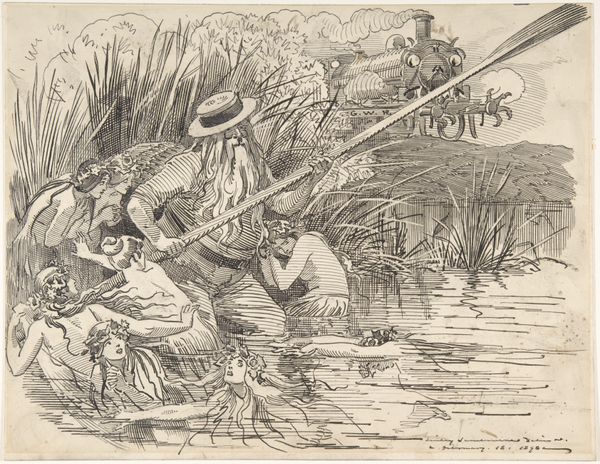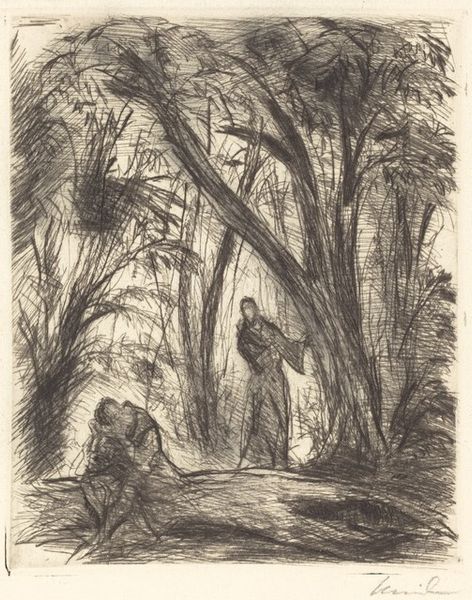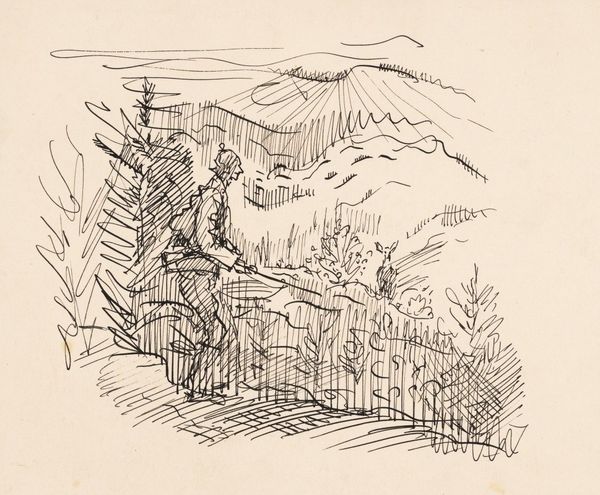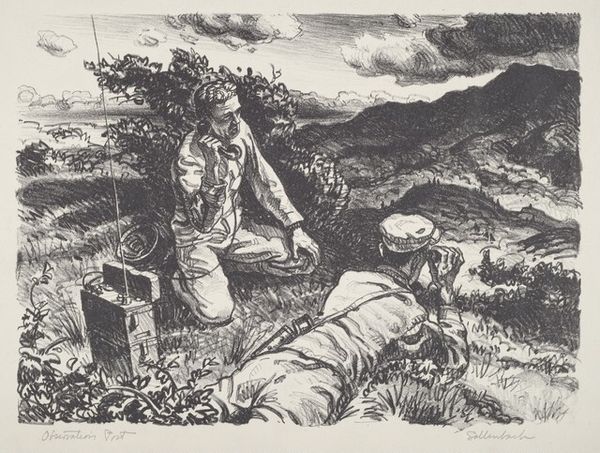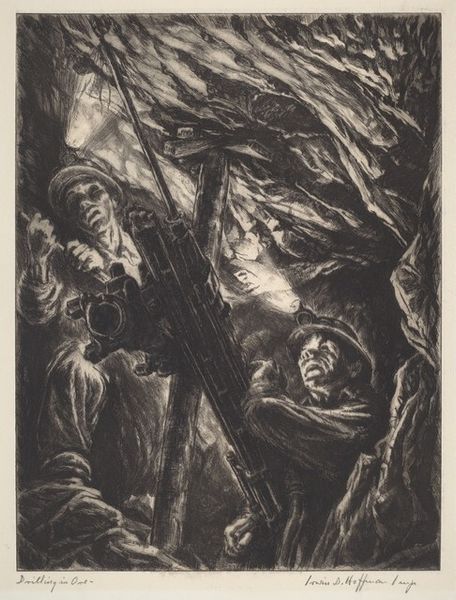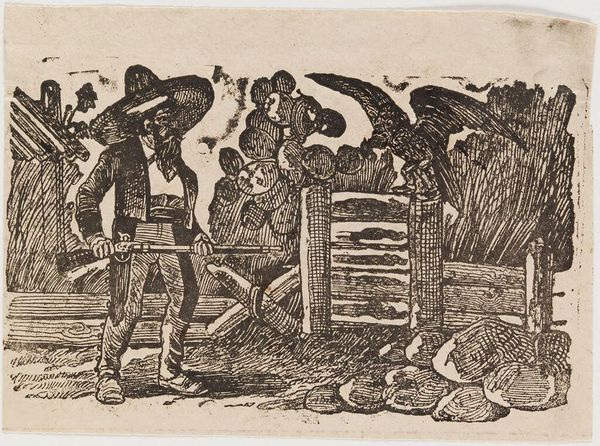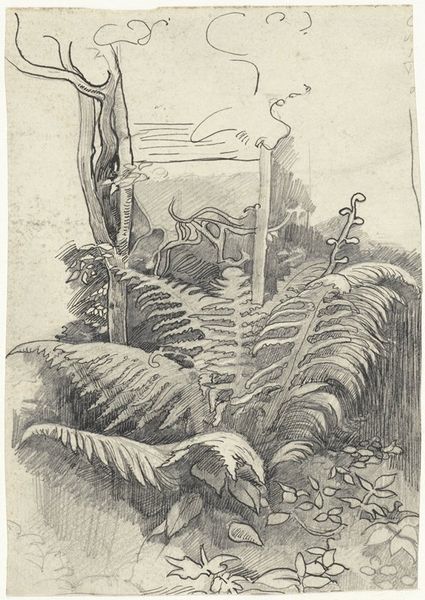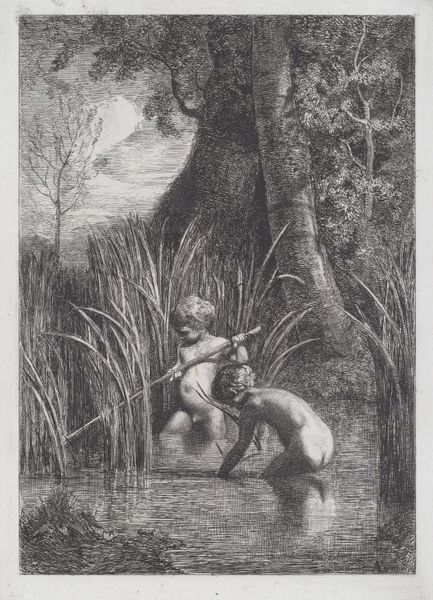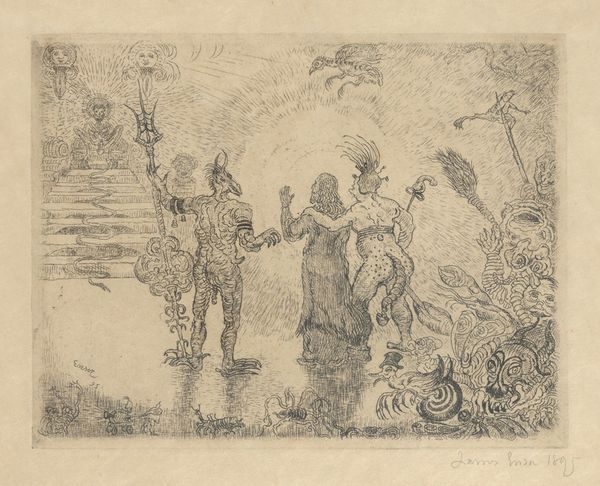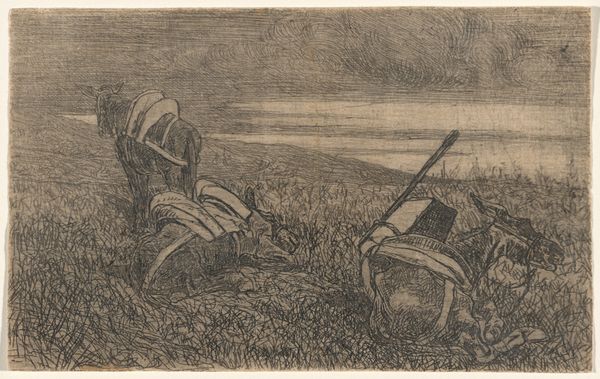
drawing, print, pencil, graphite
#
drawing
# print
#
pencil sketch
#
landscape
#
figuration
#
pencil
#
graphite
#
history-painting
#
modernism
#
realism
Dimensions: image: 22.38 × 30.8 cm (8 13/16 × 12 1/8 in.) sheet: 30.8 × 40.8 cm (12 1/8 × 16 1/16 in.)
Copyright: National Gallery of Art: CC0 1.0
Editor: So, this graphite drawing, "Ambulance, Jungle Style" by Howard Baer, made sometime between 1942 and 1945, strikes me as incredibly somber. The dense foliage feels almost claustrophobic, highlighting the figures carrying the injured. What do you make of the piece? Curator: It's interesting how Baer positions this scene. The work undoubtedly alludes to World War II. But framing the subjects in a jungle-style context is what's most compelling about this work: the pencil lines create an inescapable sense of urgency, which seems designed to evoke certain ideas of labor. Consider where it was displayed, and to whom it spoke. Baer served as an art director for advertising, so we must analyze its artistic commentary and popular reception. Why not create an explicitly anti-war statement? Editor: That's a great question. Was there a censorship issue, perhaps? Instead of an overt battlefield scene, focusing on labor makes it more palatable while still communicating a message about the realities of war. Curator: Exactly. What Baer accomplishes is quite astute. Through the seeming innocuous representation of manual work and attention to scenery, it allows for deeper political meanings regarding warfare, social hardship, and collective memory. Note the role of propaganda and public opinion during the war. What purpose do such pieces serve when put on display? How do such drawings compete with photographs in print? Editor: That makes me consider how the image operates on multiple levels. On one level, as pure reportage of war, it highlights certain elements and neglects others; and at the same time, we can consider this scene an element within a complex history. Curator: Precisely. It allows us to consider both its explicit subject and what it implicitly reveals about the social and political currents of its time. Editor: Well, that gave me a new way of looking at it. Thank you! Curator: My pleasure. Always important to consider how artworks engage with the public and political discourse of their era.
Comments
No comments
Be the first to comment and join the conversation on the ultimate creative platform.
